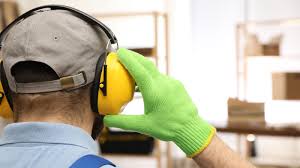In the Australian industrial sector, ensuring workplace safety is becoming a real-time data and ongoing improvement initiative, rather than a reactionary measure. Companies across the nation are now adopting pioneering noise monitoring technologies and manual audiometry testing, shifting risk mitigation approaches from compliance-driven to health-centered and operational excellence strategies.
Moving on from Outdated Safety Standards
References to noise monitoring as a ‘scheduled check’ and audiometry testing as ‘annual obligation’ are out of date. Progressively, Australian businesses are going beyond assessments of any kind. Today, business and safety experts utilize advanced noise monitoring solutions featuring sophisticated sensors and cutting-edge IoT technologies that provide uninterrupted sound monitoring. This paradigm shift from periodic measurement to continuous surveillance enables businesses to capture the ebb and flow of noise throughout the day and mitigates potential risks in real-time.
An initiative focusing on the proactive reduction of risk enables Australian businesses to respond immediately to rapid changes. Modification of workflows, equipment layouts, or shift rotations could be instituted based on real-time monitoring results to keep exposure levels within safe margins. The Australian advanced noise monitoring solutions business paradigm not only meets compliance standards but exceeds them by integrating safety into the operational fabric of organizations.
Integrating Audiometric Testing into A Holistic Hearing Conservation Program:
For noise monitoring to have the greatest value, it should be used in conjunction with other functions, such as audiometry. Industries in Australia, particularly manufacturing, construction, and mining, where there is significant exposure to noise, are now periodic audiometry testing against the backdrop of environmental data. This assists in synchronizing individual hearing evaluations with real-time noise measurement, allowing companies to assess the damage caused by long-term noise exposure on hearing at an individual level.
This, in turn, allows for more timely corrective action. Where there is ongoing noise monitoring in place, there may have been changes in the audiometry results that, although minor, can still be acted on. Changes in equipment, operational procedures, or the level of personal protective equipment used may be instituted quickly if they show a lower degree of effectiveness than was anticipated. In this case, the relationship between health and safety monitoring is dynamic because instead of waiting for changes in the audiometric results, these are taken into account meaning that there can be a preemptive response to adverse effects on worker health.
Digital innovation harnessing
This is what the workplaces in Australia are undergoing undergo- a digital transformation. Data from continuous noise monitoring and audiometry testing can now be integrated into dashboards within the cloud. Statutory safety managers can now have access to real-time data and insights through advanced analytics insight, as well as from trend and predictive analysis, enabling smarter operational decisions.
Risk managers can visualize data trends, anticipate issues, and modify safety areas effectively with the aid of interactive dashboards. Leveraging predictive analytics and machine learning algorithms enables organizations to simulate diverse exposure scenarios and assess their impacts on employee health over extended periods. This level of insight helps improve operations proactively and positions companies to adapt to changing regulations while protecting their employees.
Every employee at Australian companies is adopting a collective responsibility approach aimed at self-improvement as a result of the shift from traditional periodic safety checks to continuous safety monitoring. Employees now have the safety and real-time data needed to take initiative when it comes to their personal safety, something that was previously the responsibility of superiors. Everyone on the team learns to measure the effect of noise on their own hearing health and transforms safety from a traditional one-way enforcement endeavor into a joint hyper-collaborative effort.
Management and staff are able to communicate freely in real time with the help of regular feedback sessions and digital briefings which enable frontline workers to showcase their observations and suggest improvements based on real-time conditions. This collaborative approach enhances employee morale and transforms innovation in safety measure technologies into risk mitigation strategies.
Strategic Advantages in Responsively Changing Environment
Sydney enterprises dealing with the complex and unrelenting regulatory shifts in the country can gain strategic benefits alongside protection of employees through seamless noise monitoring coupled with audiometry testing. Resource allocation, savings on workplace accidents, and further enhancement of health productivity are possible by switching from proactive to analytic driven approaches.
Furthermore, this ensures a robust adaptive framework for enduring safety challenges arising in the future. Businesses incorporating such systems are bound to succeed in the pivitaling Australia as it adopts new digital technologies aiding in competing in the global market.
Final Remarks
Australia has seen continuous evolution in audiometry testing paired with dynamic surveillance in noise monitoring due to the Australia’s rapid evolution in technology and regulations framework. Nonstop data collection paired with safety culture strategy enables Australian businesses to turn innovative into traditonal safety measures. This fuel operational productivity, adaptability, and resilience surpassing the existing workplace safety standards in sub sectors of Australia.
